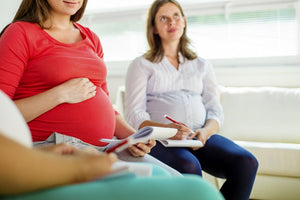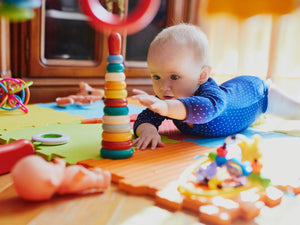Female employees and mothers in the workplace often make the news. Whether it’s because someone thinks women would be happier working than staying home or the fact they lose out on a substantial amount of super when opting out of the workforce. It’s a complex problem with no clear solutions yet as a ‘one size fits all solution’ won’t work for families.
A study by Flexcareers, a platform that links women with employers offering flexible work found over 50 percent of women in Australia have been discriminated in their workplaces simply for being a mum.
Why is this happening and is the solution for employers to offer a positive and supportive environment to their employees especially mothers? How exactly (and why) should organisations empower mothers in the workplace?
Address Bias in Organisations
Maternity coach Sona Thacore said the starting point for all businesses is to examine their own bias and assumptions about working mothers. In her experience, when a woman returns to work from maternity leave, she’s faced with one of two assumptions from managers - she won't be focused on her work anymore or being piled with more work than she can handle.
She notes however that negative thoughts about working mothers occurs even if a company has a comprehensive parental leave policy in place. “I work with many companies that believe that just because they have policies and programs in place, the attitudes and behaviours required to support them are in place too. This is not the case.”
“Unaddressed assumptions contribute to low productivity, and increased feelings of isolation and alienation for working mothers - exactly what companies don’t want if they’re trying to empower their working mothers,” said Sona.
Systemic Issue
Amanda Webb from Xplore for Success, an organisation offering gender equality consultancy to organisations and individuals, believes it’s a ‘systemic’ issue that prevents female employees who are mothers from being their most productive in the workplace. Many businesses are still adopting a traditional 9 to 5 job mentality relating to ‘presenteeism’ i.e. being visible at work all times - preventing flexible work.
Involve Dads in Parental Leave
Instead of just offering flexible work arrangements to female employees, fathers, new and existing need to be comfortable enough to ask bosses for time off for shared parenting. Presently this number is very low in Australia according to the Australian Human Rights Commission. Their Supporting Working Parents report found one in four fathers who took paternity leave also reported discrimination.
Amanda believes Australia is far behind other countries like Scandinavian when it comes to offering both parents flex work.
“The link between involvement and empowerment can’t be understated,” said Sona.
By involving return to work mothers in the decision-making and strategies associated with knowledge transfer, team participation and role expectation, companies can give working mothers a sense of ownership in their own success rather than leaving them to experience the ‘left out in the cold’ feeling explained Sona.
Are there some practical things that an organisation can offer its female employees to keep them healthy, happy and committed?
Sona suggests the following strategies be used by companies who want to retain their female talent before and after maternity leave:
- Be transparent at all times - companies need to inform their female employees about their rights as pregnant employees and as working mothers. Legislature needs to be discussed openly and honestly as part of a company’s policy.
- Involve employees in decision making.
- Offer flexible work options - it needs to be supported and facilitated by both parties for successful outcomes to occur. “As much as I encourage businesses to make shifts in their thinking (re: flexible work), I also encourage mothers who work remotely to make themselves available (when possible) to attend team meetings and video conferencing etc. It’s about give and take.”
- Proper re-orientation back into the workplace after maternity leave - having a comprehensive orientation program, including a negotiated ‘settling back in’ period can go a long way towards making working mothers feel included, competent and productive.
- Respect that working mothers (and all other employees!) have a life outside of work - if employers want their working mothers to be effective and productive at work, they have to allow them to have their family time.
- Allocation of a private breastmilk pumping room for those mums who wish to pump milk at work.
Our Products
-

01. Guide to a Healthy Pregnancy
$55 -

02. Positive Birthing Course
$55 -

03. Infant Feeding Guide
$55 -

04. Baby Sleep Guide - First 12 Months
$55 -

05. Toddler Parenting Course 1 - 3 Years
$55
-
 When to Start Antenatal Classes?
When to Start Antenatal Classes?
Becoming a parent is an incredible milestone, but it comes with a host of changes that can be daunting, especially for first time parents. Antenatal classes are all about offering expectant parents the education they need to make informed decisions, look after their bodies and care for their newborn babies. While you probably already have a long list of things you need to accomplish during your pregnancy, it’s a good idea to make time to attend antenatal classes.
-
 Development Milestones 4-8 Months
Development Milestones 4-8 Months
As they reach the middle of their first year, you'll start to see bigger leaps in their growth and ability!
In this article, we’re going to discuss your baby’s developmental milestones between 4-8 months, and what you can expect along the way.





 When to Start Antenatal Classes?
When to Start Antenatal Classes?
 Development Milestones 4-8 Months
Development Milestones 4-8 Months








